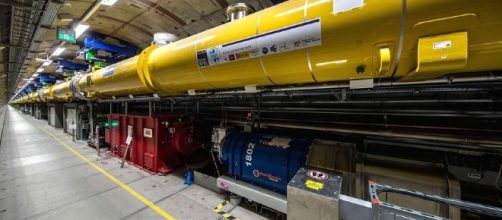Elon Musk's aerospace company SpaceX does not seem content to go a week without making headlines. This time it involves their future satellite plans. Also in the news is the European XFEL, which houses the largest X-ray laser on Earth.
SpaceX's thousands of satellites
SpaceX announced that it has plans to launch thousands of small broadband satellites into low Earth orbit. This was announced during a broadband infrastructure meeting with the Senate Committee on Commerce, Science and Transportation. The vice president of satellite government affairs for SpaceX, Patricia Cooper, informed the Senate.
Cooper said that the company plans to launch 4,425 of these satellites with the goal of one day setting up a global broadband internet constellation.
SpaceX will first launch a prototype version of one of the satellites at the end of this year, with a second coming in the early months of 2018. The company is planning to start launching these satellites in 2019 and expects to fully deploy all of them by 2024. They would be launched in phases on board the company's Falcon 9 rockets.
The biggest X-ray laser makes light
The European X-ray free electron laser (XFEL) is an X-ray research laser facility that houses the biggest X-ray laser on Earth. It is located in Hamburg, Germany. The facility is mostly in underground tunnels, being a total of 3.4 kilometers (2.11 miles) long.
European XFEL reached its last major milestone before it will officially open later this year in September. The laser generated its first ever X-ray laser light.
For the lasers first firing it had a repetition rate of only one pulse per second, with the goal being for it to increase to 27,000 pulses per second. The next step in the project will be to direct the X-ray flashes through the last tunnel area with the help of special mirrors. This will get the laser light into the experiment hall and allow the commissioning of the experiment stations to finally start up.
The scientific community is excited that the laser light being produced from the most powerful laser accelerator on Earth will mark the start of a new area of research.
It should be able to provide scientists with some of the most detailed images ever of the molecular structure of objects. It can also help to offer new live recordings of biochemical reactions. International partners from across Europe and around the world contributed resources to the project.


